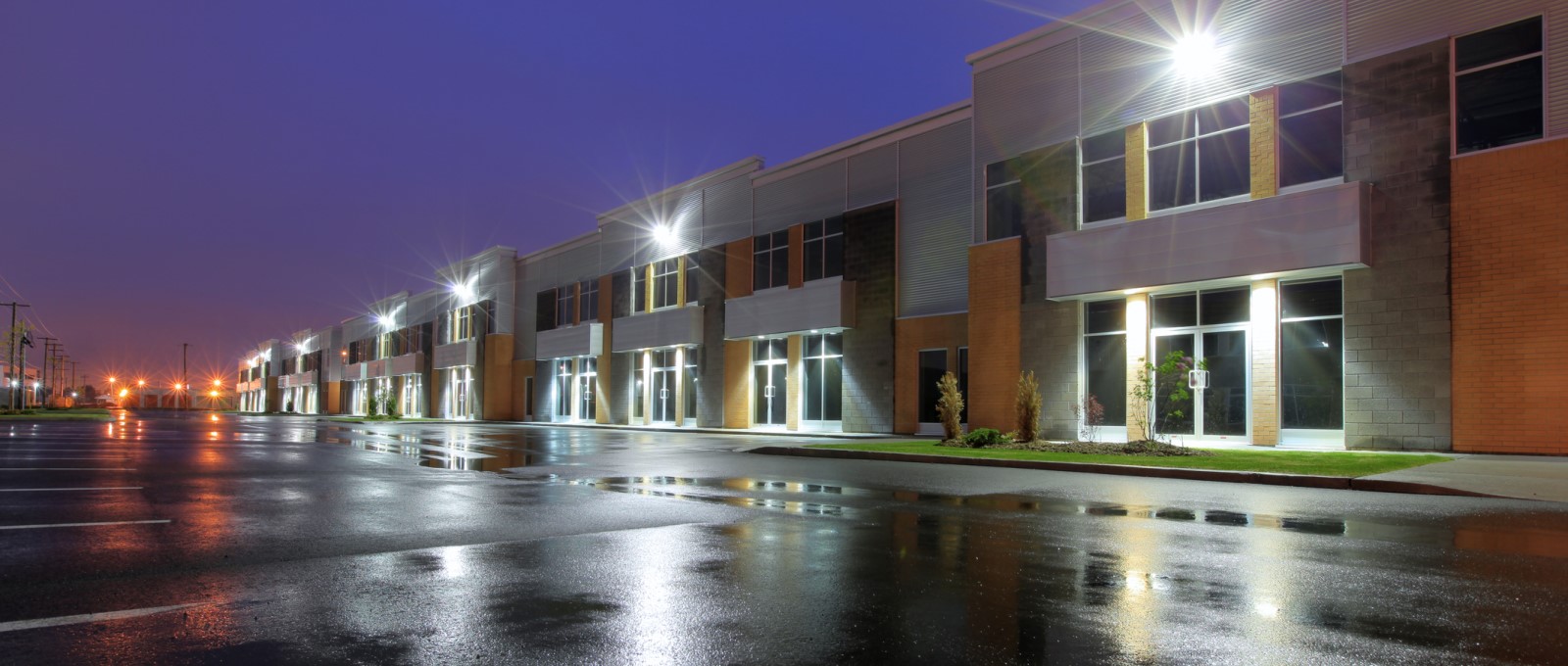A Guide to Outdoor Lighting
Everything you need to know about powering outdoor lighting.
Having sufficient outdoor lighting is extremely beneficial and is mandatory in some cases. The Workplace (Health, Safety and Welfare) Regulations 1992 sets out the requirements employers should follow to provide a safe and healthy workplace environment, which includes ensuring that there is “suitable and sufficient lighting.”
The type of luminaire or light fitting you use depends on the purpose and the surfaces that require light. For safety reasons, for example, you may need to ensure there is sufficient lighting outside during the evening or at night to help people navigate away from a building. Or if you need to highlight a safety notice on the side of a building, spotlights will do the job. Some examples of outdoor lighting include:
- Architectural lighting – enhances the exterior features and aesthetics of a building.
- Emergency lighting – provides safe lighting in the event of power failure or fire, allowing occupants to evacuate safely
- Way and route lighting – ideal for lighting paths, entrances and driveways for nighttime visibility
- Step lighting – improves safety on staircases with dedicated lighting to help users.
Outdoor lights are typically powered by mains supply, ELV transformers or from solar charged batteries and can be controlled in different ways. For example, a typical light switch, motion sensors or increasingly smart devices.
Solar charged battery lights are typically extra low voltage (ELV) and require no additional wiring, as they capture energy from sunlight throughout the day, charging their batteries in order to shine at night. These can provide steady brightness until the cells discharge, but this is unsatisfactory for essential lighting. However, outdoor lights powered from the mains can be permanently on, if required. The cables for these lights need to be correctly selected and installed for current rating and environmental conditions.
Environmental considerations for outdoor lighting
When it comes to selecting the best cables to use for outdoor lighting, it is important to consider the environmental conditions. UV radiation from daylight, moisture and temperature are some of the biggest environment challenges. Cables can also be under threat from rodent attacks or from mechanical damage, potentially caused by heavy machinery such as diggers. In these circumstances, you should use cables designed to withstand these conditions.
Twin & earth cables are sometimes installed to provide power to outdoor lights from inside the building, but you should bear in mind that these cables are not suitable outside as they are designed to meet a different standard. Twin & earth cable is designed, manufactured and tested to meet British Standard BS 6004, which specifies all the materials, dimensions, and test methods for the construction and performance of cables that have PVC insulation and rated voltage 300/500 V. These cables are not weatherproof and are designed for indoor use.
Cables suitable for outdoor use
To get power to outdoor lights, it may be best to use steel wire armoured (SWA) cable, particularly if the lights are away from the distribution board, for example, or are on an outbuilding. SWA cable is typically installed underground and in areas where it may be at risk from mechanical damage. Power is distributed from the consumer unit, and it may go through the wall, under the ground, and into the lights. The circuit designer or installer may choose radial or ring circuits to supply the light fittings.
Another cable, used for outdoor lighting is 6491X. 6491X is a single core often called ‘PVC singles’, low voltage wiring cable with a solid or stranded copper conductor. It has PVC insulation, but no outer sheath to protect the insulation. The cable is designed to be installed in surface mounted or embedded conduits, or similar closed systems. This containment is to prevent damage from impact either blunt or sharp objects – offering longer lasting protection. 6491X is suitable for fixed protected installation in or within light fittings, inside appliances, switchgear and control gear.
Prysmian LSX is another cable suitable for outdoors. LSX is a Low Smoke Zero Halogen (LSOH) and flame retardant cable for low voltage wiring circuits – typically for lighting and small power distribution inside buildings – and is suitable for clipped, surface, tray and void installation. AP clips should be used to fix it permanently onto structures and surfaces and although LSX is unsuitable for burying, it is suitable for outdoor surface use in areas of low risk of impact.

LSX features copper conductors and XLPE insulation with a longitudinal aluminium inner sheath. Similar to FP200 Gold, if the cable is accidently pierced with a metallic object, this aluminium screen creates a pathway to earth, minimising the risk of electrical shock and assisting circuit protection. Additionally, its white sheath is part of its UV stability, so it can withstand normal UK sunlight but will benefit from shading. Its construction means the cable is easily dressed into place and can be mounted on the surface because it normally needs no additional mechanical protection. Overall, LSX is a safe cable with good protection.
Due to the challenging outdoor environment, it is important to ensure suitable maintenance is carried out as corrosion can be an issue for any wiring installation. For example, the cable gland or cable fixings might rust and break off, and plastic ones are likely to be affected by UV radiation. It is also important to ensure that cables are properly fitted with appropriate outdoor glands and fixings.
Find out more about Prysmian building wires: https://uk.prysmian.com/markets/electrification/industrial-and-construction/building-wires.



